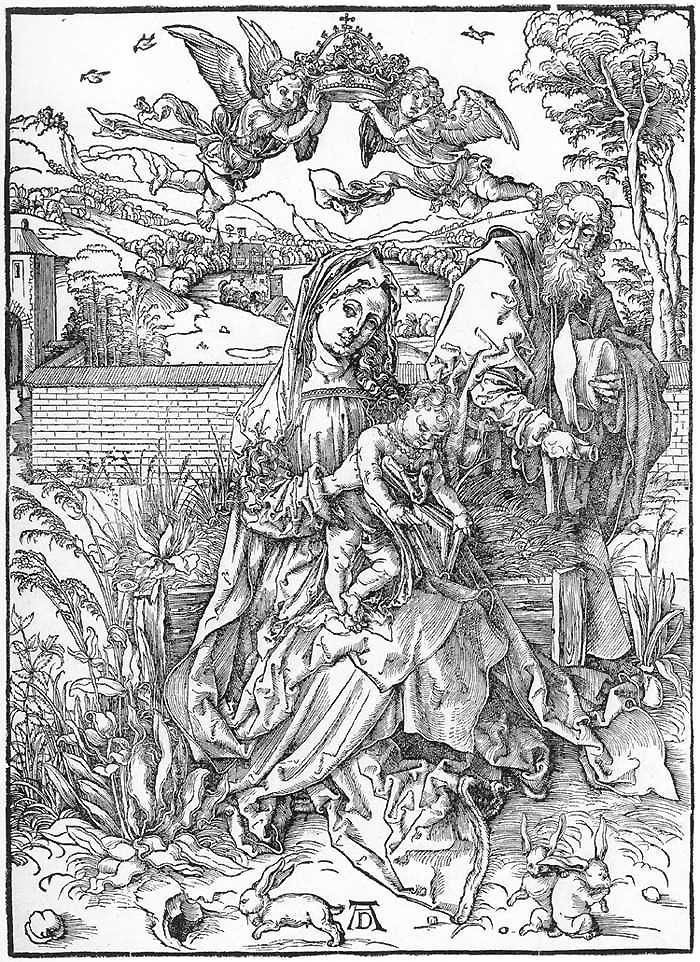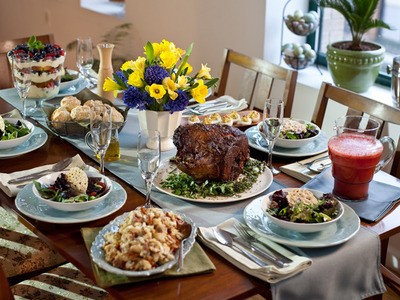Bet You Didn’t Know: Easter Symbols, Traditions, and Their Meanings.
Despite what you may have heard, they’re not actually Pagan. Time to reclaim Christian heritage!
Silly Rabbit, Easter Is For…

The picture to the left is a pre-Reformation wood cut by German artist Albrecht Dürer. As Mary and Joseph parent the baby Jesus, they are met by three rabbits, one of which bounds to a hole in the earth where a stone is rolled away. Wait, what?
Long considered symbols of spring and fertility in northern Europe, the rabbit (or hare) has a more storied history in many world religions, from Buddhism to Judaism to, yes, even Christianity. Dotted throughout Europe, especially in northwest Germany and France and southern England, are three hare motifs associated with the Trinity and the Virgin Mary. Exactly what the hare represents – perhaps from an old Jewish motif of an eagle clutching two hares without harming them (“as an eagle to her nest…” Deuteronomy 32) – we don’t know. But it’s association with Passover, Easter and new life go back a long, long time.
Ham, Lamb and the Easter Dinner

The local grocery store has hams on sale, just like they do at Christmastime. For some reason, this is the holiday meat. And that reason is actually pragmatic as can be: in the middle ages, pigs were slaughtered in the winter and the pork was salted as a preservative. Beef, fish, and poultry (Christmas goose notwithstanding) were much harder to come by. So when spring rolled around, the ham was easily there to be eaten. And anything you do for long enough becomes a tradition.
The eating of lamb is more ancient and more spiritually significant. As with the Easter egg, early Christians celebrated the Passover, which specifically called for the blood of a young lamb. John the Baptist, of course, points to Jesus as “the lamb of God, who takes away the sin of the world,” and the author of Hebrews notes Christ’s sacrifice as the true Passover lamb. So Easter’s preservation as part of Passover remains.
SKM: below-content placeholderWhizzco for FHB

